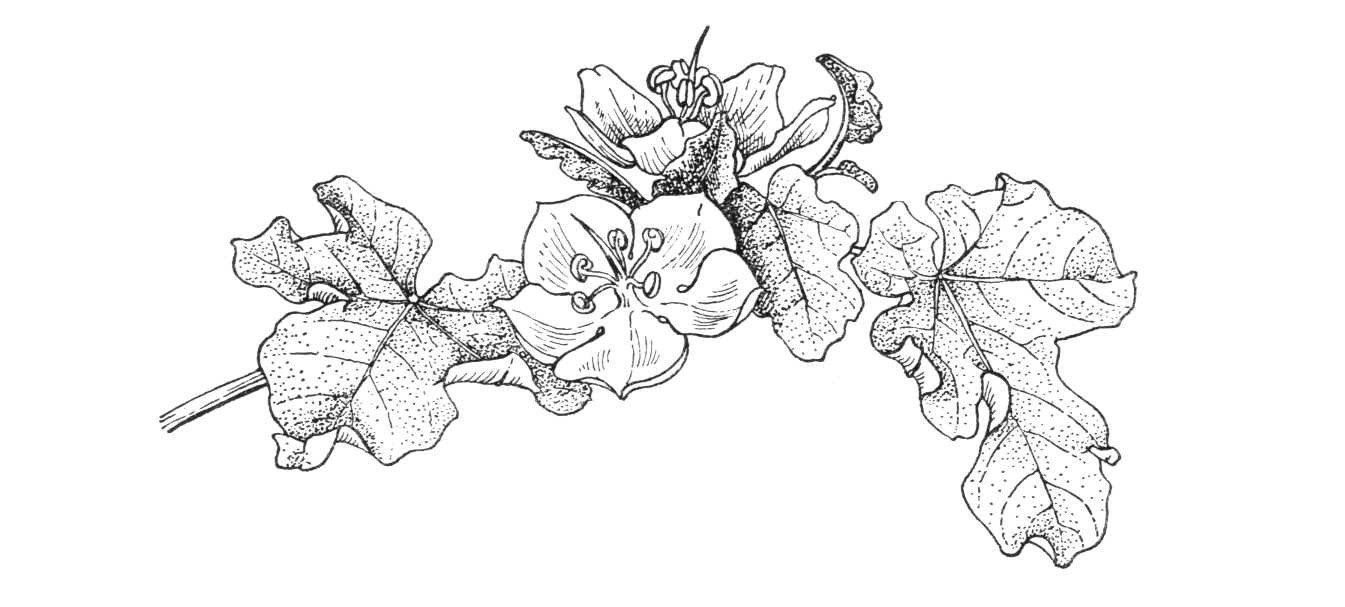Fremontodendron mexicanum
Credits
Article from Bean's Trees and Shrubs Hardy in the British Isles
Recommended citation
'Fremontodendron mexicanum' from the website Trees and Shrubs Online (treesandshrubsonline.
Genus
Synonyms
- Fremontia mexicana (Davidson) MacBride
- Fremontia californica var. mexicana (Davidson) Jeps.
An evergreen or partially evergreen shrub or small tree 10 to 20 ft high; young shoots densely covered with pale brown, stellate down. Leaves usually roundish in general outline, 1 to 3 in. wide in wild plants, larger in cultivated ones, with five or seven main veins springing from the base and shallowly five- or seven-lobed, cordate at the base, with much the same indumentum as in F. californicum; leaf-stalk as long as the blade or shorter. Flowers borne on the main branchlets (not on short side-spurs). Calyx 21⁄2 to 4 in. across, shallowly bell-shaped, orange-yellow, often stained red on the outside near the base; as in F. californicum there is a pit at the base of each calyx-lobe, but it is not hairy with long cottony hairs as in that species, though it is downy. Capsules conical, acuminate at the apex. Seeds black, glossy, without conspicuous caruncles. Bot. Mag., t. 9269.
A native of the Mexican State of Baja California (Lower California) but extending across the boundary with the USA into San Diego Co.; described in 1917 from a specimen cultivated by Miss K. O. Sessions. It was introduced to Britain by Tom Hay, Superintendent of Hyde Park, who obtained seeds from Los Angeles in 1926, which he distributed to several gardens, including Kew. Plants raised from these seeds were not hardy at Kew, even against a south wall, being killed in the winters of 1927–8 and 1928–9. But the seedlings flowered when a few months old and reached 5 to 6 ft in one season, continuing to flower from the leaf-axils from July to September. F. mexicanum is said to be more valued by California gardeners than F. californicum, its flowers being of a deeper yellow and borne over a longer period. It has never been widely enough grown in Britain for its relative merits to be assessed, but it certainly appears to be more tender than F. californicum. It is perhaps worth further trial in the mildest parts, especially if seeds can be obtained.

